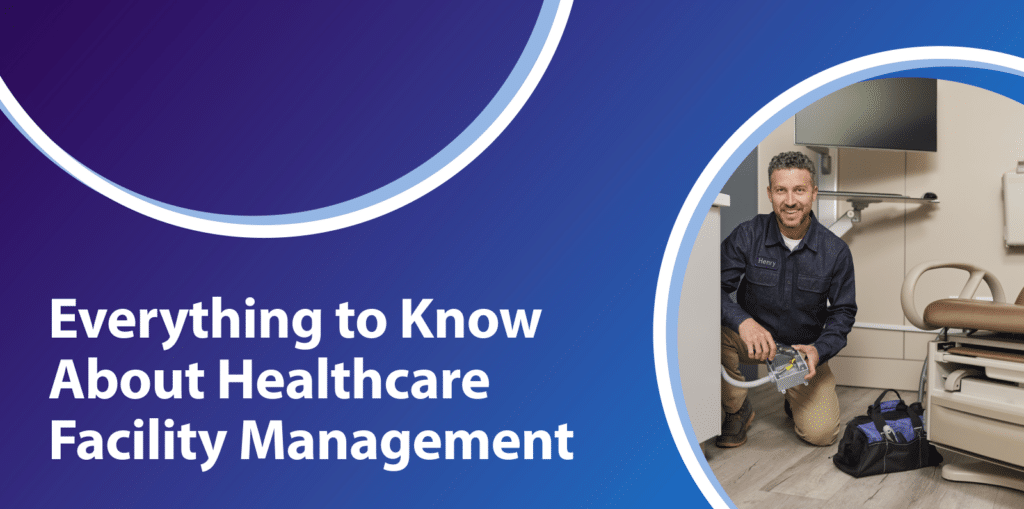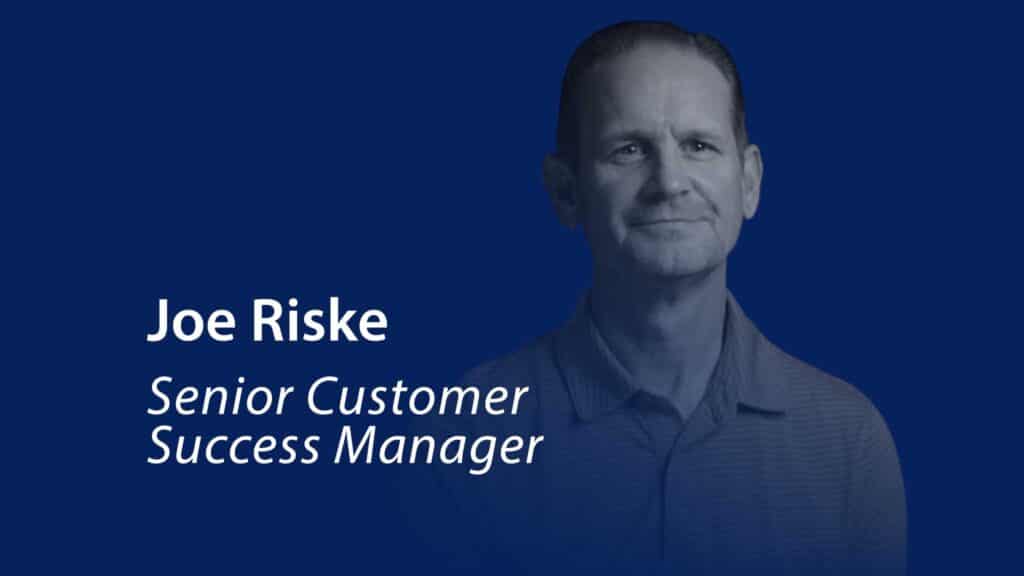What is Preventive Maintenance?
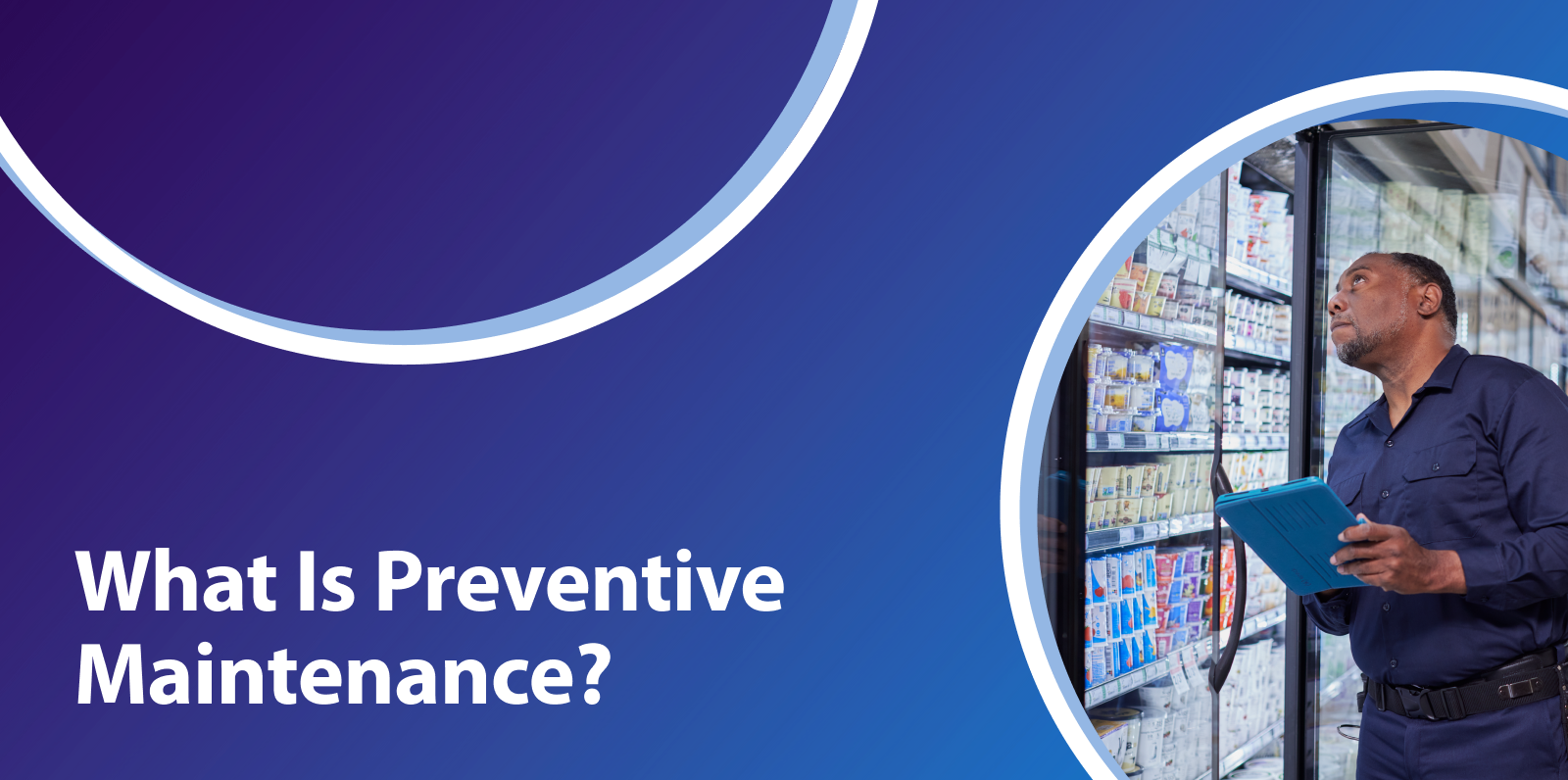
Discover the importance of preventive maintenance, its benefits, different types, best practices, and real-life examples. Get insights into preventing downtime.
Organizations need more than luck and will to keep things running smoothly. Careful planning can prevent many issues for facilities managers. Allowing a piece of machinery to run without a regular maintenance schedule can end with a catastrophic breakdown that stops production and costs you thousands.
Preventive maintenance moves past the philosophy of overlooking seemingly minor issues by addressing them before they become significant problems.
What is Preventive Maintenance?
A common preventive maintenance definition, also called preventative or planned maintenance, is extending the life of company assets through regularly scheduled maintenance or upkeep. This is often done through a regular inspection of your facility’s assets.
In addition to inspecting equipment, preventive maintenance includes maintaining accurate records of prior inspections and service reports. The information gives technicians crucial information that helps them figure out when they might need to change parts on specific assets and troubleshoot issues when they crop up.
Importance of a Preventive Maintenance Schedule
An effective preventive maintenance schedule is the key to reaping all the benefits of preventive maintenance. You can’t implement proactive maintenance tasks without a regular maintenance schedule.
Ensuring that assets are serviced regularly also elongates their expected lifespan. The advantages of preventive maintenance are especially important for critical equipment that could cause a safety hazard, severe workflow disruption, or significant property damage upon failure.
This approach helps maintain equipment effectively and significantly reduces the likelihood of unexpected equipment downtime. Although your preventive maintenance strategy depends on your needs, some asset maintenance tasks should be on anyone’s checklist.
- Clean Equipment: Keeping equipment clean prevents dirt and debris buildup that can cause damage or reduce efficiency.
- Lubricate Moving Parts: Regular lubrication reduces friction between moving parts, which reduces wear and tear.
- Check and Replace Worn Parts: Regularly checking for and replacing worn or damaged parts prevents unexpected failures.
- Update Software: For equipment with software components, ensure the software is up-to-date to maintain optimal performance. Up-to-date software is also less prone to cybersecurity risks.
- Test Safety Features: Regular testing of safety features ensures they function correctly if needed.
- Record Maintenance Activities: Keep detailed records of all maintenance activities to track equipment health and maintenance history.
- Train Staff: Ensure staff are trained in proper equipment use and basic maintenance to prevent misuse and recognize early signs of malfunction.
- Adjust and Calibrate Equipment: Regular adjustments and calibrations ensure equipment operates within desired specifications.
- Plan for Replacement: Anticipate the end of each asset’s life and plan for replacements to avoid unnecessary additional downtime.
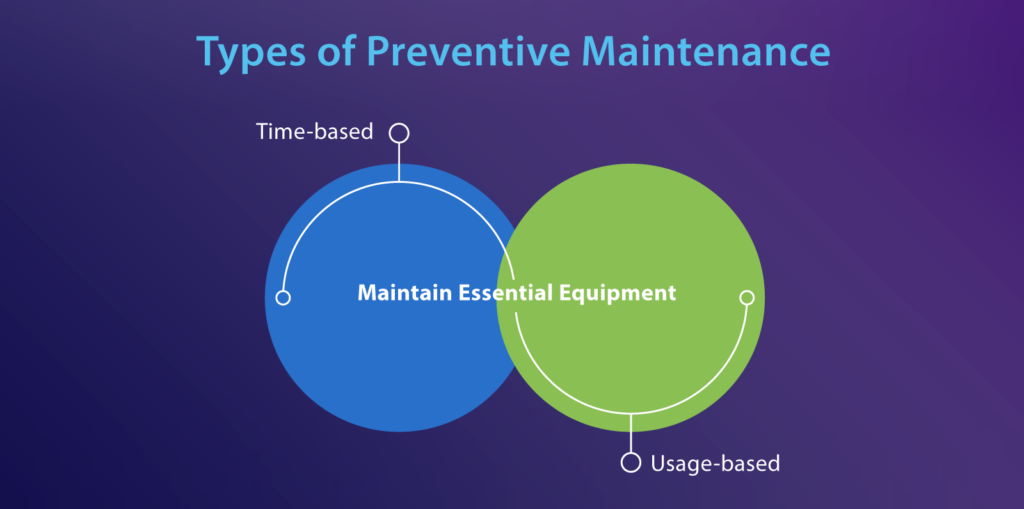
Types of Preventive Maintenance Schedules
While different types of preventive maintenance are implemented differently, they each revolve around planning how to maintain essential equipment within your facilities.
Time-based
Time-based preventive maintenance (TPM) is planned upkeep that relies on a schedule outlining when to perform maintenance on a piece of equipment. It’s important to schedule any upgrades, patches, or repairs in advance. Organizations must outline a maintenance plan for all parts or assemblies looked at during inspections.
Usage-based
Usage-based preventive maintenance (UBM) focuses on how often equipment gets used. Usage-based maintenance planning accounts for the average daily use of an asset and its environmental conditions. That information gets pulled together to forecast when a company should plan to inspect or perform maintenance on an asset.
Using the usage-based maintenance model can save money by keeping organizations from performing unnecessary inspections on lesser-used equipment.
Condition-Based Maintenance (CBM)
Condition-based maintenance (CBM) focuses on the real-time health status of equipment. This approach uses sensors and data analysis to continuously monitor an asset’s condition.
Maintenance tasks are only performed when certain indicators show signs of decreasing performance or upcoming failure. This strategy will reduce maintenance costs because it prevents the maintenance team from performing unnecessary maintenance tasks on properly functioning equipment.
Reliability-Centered Maintenance (RCM)
Reliability-centered maintenance (RCM) is a strategic approach focusing on understanding assets’ functions and potential failures in their present operating context. The focus is on identifying critical components and determining the most effective maintenance strategy for each one.
The goal is maintaining system reliability and safety while optimizing resource allocation and cost savings.
Failure-Finding Maintenance (FFM)
Failure-finding maintenance (FFM) is a process used to identify hidden failures that are not apparent during normal operations. The frequency of equipment inspections is determined using a formula that considers various factors, like the mean time between failures of both the protective device and the protected function.
FFM aims to ensure the readiness and reliability of critical assets, such as fire alarms, before they are needed.
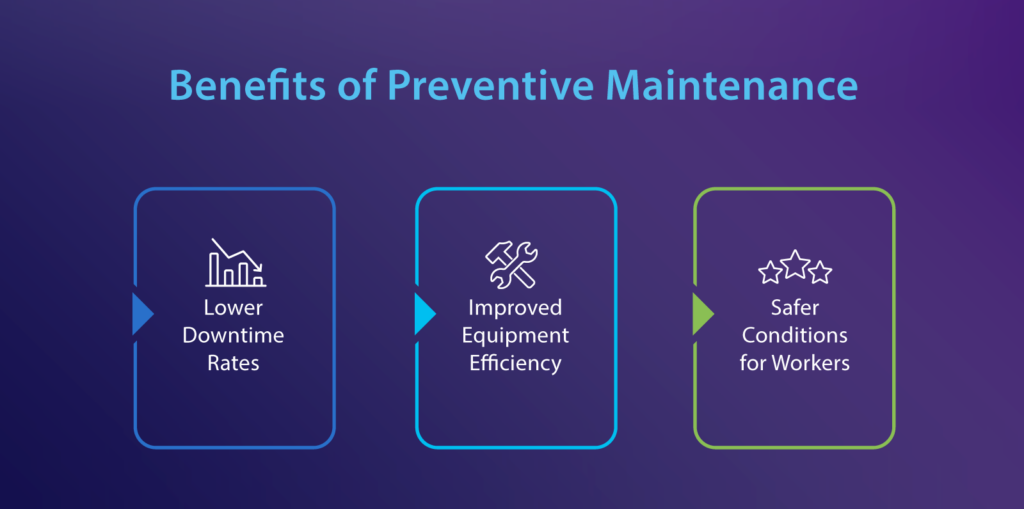
Benefits of a Preventive Maintenance Schedule
1. Lower Downtime Rates
Every day of production a business loses because of equipment outages means less money is generated for the company. You’re trapped in reactive maintenance mode if you can’t predict when an asset might fail.
Your business is left with unplanned downtime that can result in missed deadlines and unhappy customers. Preventive maintenance minimizes production time lost and has significant impacts on day-to-day operations.
2. Improved Equipment Efficiency
Preventive maintenance anticipates equipment’s everyday wear and tear, helping you keep assets in optimal working condition. Replacing parts, refilling fluids, and performing regular inspections help ensure equipment works as needed during critical periods for an organization. Companies can also improve an asset’s life cycle and its overall performance.
3. Prevent Health and Safety Risks
Safe working conditions are a top concern for businesses. Regular preventive maintenance for equipment can result in a safer working environment for everyone. Routine checks can uncover potential hazards before they cause harm, leading to fewer work-related injuries.
4. Increased Equipment Lifespan
Regular preventive maintenance extends asset life significantly. By addressing small issues before they turn into big problems, you avoid the need for major repairs that can shorten asset lifespan. This effect occurs because consistent, routine maintenance reduces the strain on the asset’s components.
5. Cost-Effectiveness
Implementing a preventive maintenance plan is a cost-effective strategy because it reduces the likelihood of costly repairs and replacements. Regular maintenance can identify and fix minor issues before they escalate into major problems that require expensive repair costs.
Preventive Maintenance and Other Maintenance Strategies
Many companies rely on a combination of preventive and predictive maintenance to improve the reliability of assets and reduce downtime resulting from equipment failures.
Preventive Maintenance
Preventive maintenance revolves around the scheduled upkeep of assets. It’s like humans getting a regular medical check every year. You review what’s happening with a piece of equipment, even if it doesn’t exhibit any problems.
Predictive Maintenance
Predictive maintenance focuses on certain preset conditions. For example, if a technician notices that an asset is operating abnormally, they would schedule an equipment inspection to better understand what’s happening.
Predictive maintenance keeps you from “over-maintaining” healthy assets while focusing on those at a higher risk of breaking down.
Reactive Maintenance
Reactive or corrective maintenance happens when you fix equipment after it breaks down. Using reactive maintenance as your primary maintenance strategy is not recommended. Equipment failure can be costly, and unplanned downtime can lead to lost productivity. However, it’s sometimes necessary for emergency situations.
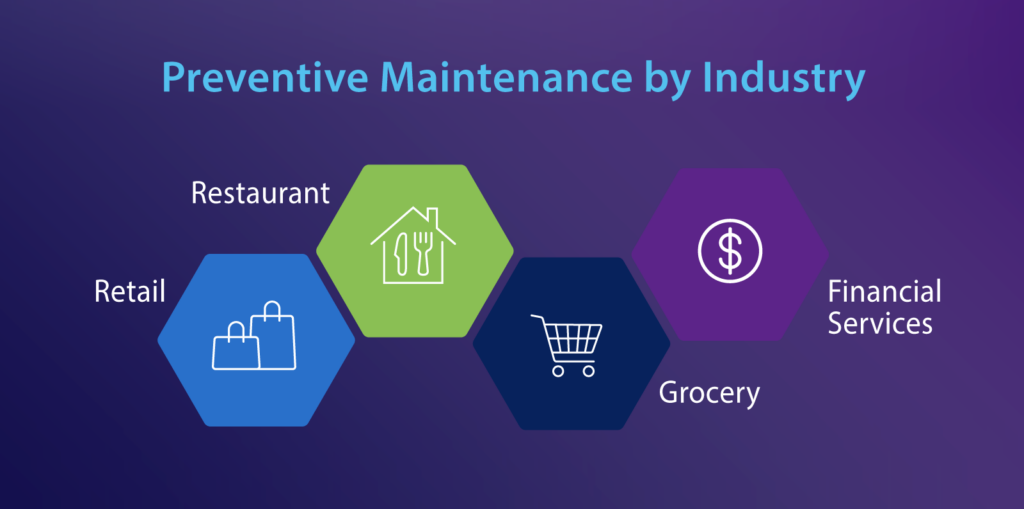
Real-Life Examples of Preventive Maintenance
Retail
Maintaining retail stores involves many moving parts, including keeping the lighting and plumbing in working order and ensuring fire-fighting systems are up to code. Taking a proactive approach to retail stores through preventive maintenance helps owners avoid equipment problems or quality issues that impact the customer experience.
Restaurant
Preventive maintenance helps restaurant owners stay open by keeping an important asset like a stove from breaking down during the dinner rush. Regular checks of stoves and kitchen equipment ensure they remain in working order. Cleaning grease traps or ensuring refrigerators and freezers keep food at the correct temperature are examples of every day, technically preventive maintenance tasks.
Grocery
In addition to staples, many grocery stores offer prepared foods that customers can come in and grab when they don’t have time to prepare meals. The displays keeping food hot and cold must receive proper upkeep. That means ensuring each asset gets proper maintenance and that there’s no debris trapped that could impact how it functions.
Other functions that might fall under a grocer’s preventive maintenance plan include the following.
- Making sure meat slicers receive a regular cleaning
- Ensuring juicers get cleaned on a regular schedule
- Planning out shelf restocking
- Making sure the air filters and condenser coils on refrigerated units get scheduled for maintenance
- Checking the exhaust and blower motor fans on an oven
- Keeping floor cleaning equipment in stock
Financial Services
Having accurate information available is key to keeping financial operations running smoothly. Preventive maintenance helps those working in finance track data around work orders, money paid out for repairs, and how well your preventive maintenance program saves on operational costs.
Manufacturing
In manufacturing, preventive maintenance is crucial to ensure machinery and production lines run efficiently and safely. Regular inspections and maintenance of machines prevent unexpected equipment failures that can halt production cycles and lead to significant financial losses.
Maintenance processes like lubricating moving parts, replacing worn belts, and calibrating machinery must be performed consistently to prevent risks.
Healthcare
Preventive maintenance in healthcare settings is critical for patient safety and ensuring uninterrupted medical services. Scheduled maintenance of medical equipment ensures it functions correctly when needed.
Additionally, it’s important to ensure that all lighting, HVAC systems, and electrical systems are in optimal condition to support a safe and comfortable environment for patients and staff.
Preventative Maintenance Scheduling Best Practices
Take an Asset Inventory
Compile a comprehensive list of all assets. This list should include details like each asset’s purchase date, condition, value, and location. This information makes it much easier to acquire and utilize the right maintenance tools for each task.
Integrating automation in asset management can ensure accurate records and regular inventory updates without the risk of human error.
Create a Preventive Maintenance Program
Strategically design a preventive maintenance program outlining each asset’s routine maintenance tasks. The program should be based on the manufacturer’s recommendations and industry standards to ensure optimal performance and longevity.
Determine Priorities
Identify the most critical assets for your operations and create a preventive maintenance checklist. Prioritize these assets whenever you’re scheduling preventive maintenance. Doing so ensures that they receive the most attention, which minimizes the risk of any unplanned equipment failures that could profoundly impact your facility.
Analyze Equipment Maintenance History
Review past maintenance records to identify patterns and common issues. This analysis can help fine-tune your preventive maintenance program and predict future maintenance needs. This insight into your equipment maintenance history will help you implement preventive maintenance tasks more efficiently.
Utilize a CMMS System
Tracking the details around maintaining assets can quickly become very complicated if you’re trying to keep up with everything in a spreadsheet. That’s why most companies use a computerized maintenance management system (CMMS) to track the various workflows associated with preventive maintenance programs.
Integrate Asset Tracking and Management
Integrate asset tracking and management into your preventive maintenance schedule. These processes help you know the condition and location of each asset before regular maintenance occurs. This knowledge makes planning maintenance easier as you’ll know which assets need maintenance, when, and where they are located.
Use Preventive Maintenance Software
Implement software specifically designed for preventive maintenance. Maintenance software can automate scheduling, track maintenance activities, and provide insights into the effectiveness of your preventive maintenance practices.
Avoid Downtime and Enhance Your Preventive Maintenance with ServiceChannel
Preventive maintenance benefits may be clear, but scheduling preventive maintenance tasks in a way that fits your regular operations is another story. Many maintenance managers struggle to balance the preventive maintenance process with other needed tasks and remain vigilant against any possible equipment failure.
The ServiceChannel platform can make this balancing act much easier for you and every maintenance technician on your team. Our software can help you make smart investments in your preventive maintenance strategy by giving you clear insights into every asset at every location. You can use this information to optimize every scheduled maintenance task.
Book a free demo to find out more.
Preventive Maintenance FAQs
Preventive maintenance helps companies avoid downtime caused by unexpected asset breakdowns, which saves on operational and maintenance costs in the long run. It also increases your facility’s safety standards as it prevents workplace accidents that could be caused by malfunctioning equipment.
Preventive maintenance can’t stop companies from experiencing equipment failures. However, they can avoid many potential catastrophes through regularly scheduled checks of valuable assets, allowing them to fix minor issues before they balloon into major problems.
Preventive maintenance focuses on scheduling repairs and servicing assets on a schedule, regardless of whether they exhibit problems. Predictive maintenance focuses on checking equipment that is most likely to have issues affecting the company.
Preventive maintenance is more cost effective than reactive maintenance for a small business. Regular maintenance reduces the risk of sudden breakdowns that can be more expensive to fix when compared to the typical preventive maintenance task. It also extends the lifespan of equipment, which means businesses don’t have to replace machinery as often.

